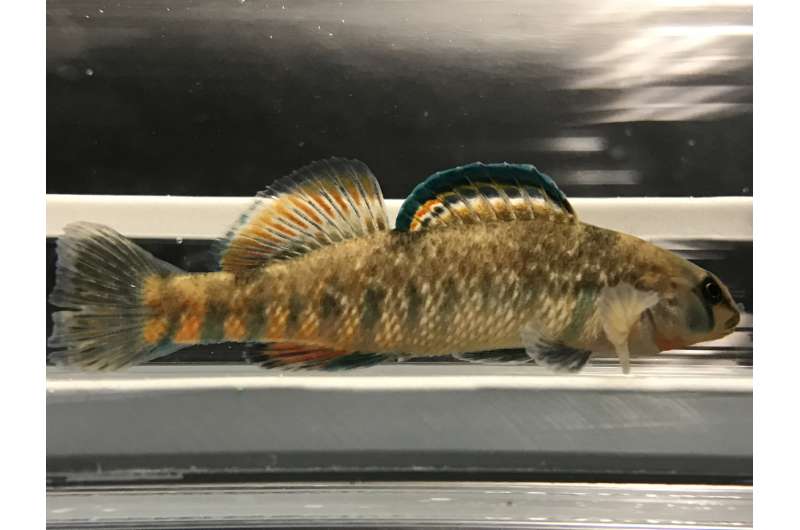One fin in the grave: Necrobiome poses a health threat to fish

Sewage-contaminated water is even more harmful for wildlife than previously thought. "Decaying fish can act as a sink for the spread of harmful bacteria to scavenging fish and birds. Fish caught in areas downstream of effluent outlets may also pose a health risk to anglers", says Dr Paul Craig whose research team from the University of Waterloo, Canada is the first to examine the effects of the bacterial necrobiome on fish exposed to wastewater.
This is the first study to analyse how the unique community of bacteria associated with dead and decaying organisms, known as the 'necrobiome', is affecting the metabolic performance of rainbow darters. Dr Craig and his team achieved this by measuring the rate of breathing in fish exposed to contaminated water using custom-made respirometry chambers.
"We saw an increase in metabolic rate in fish exposed to wastewater effluent," explains Dr Craig, "this indicated that these fish were under environmental conditions that required more energy to survive in a resting state, leaving less energy to find food, attract mates or escape predators".
In addition to harmful pollutants such as pharmaceuticals, Dr Craig's co-author, Dr Andrew Doxey, describes how the effluent contaminated wastewater is also a source of pathogenic bacteria: "we can clearly see that fish from effluent-contaminated waters are particularly enriched in pathogenic bacteria most associated with human infections," says Dr Doxey, "including bacteria that cause food poisoning such as Clostridium perfringens."
When wastewater exposed fish were returned to clean water, the metabolic rate returned to normal after a week, prompting Dr Craig and his team to investigate the role of the necrobiome: "This increase in metabolic rate is likely the result of a costly immune response to overcome infection from these pathological bacteria."
Fortunately, many of these wastewater facilities feeding into Dr Craig's study site are currently being upgraded, which will allow him to analyse how this may affect the presence of the necrobiome: "Hopefully these improvements will help reduce the number of micropollutants and pathogenic bacteria that is being discharged from these facilities."
Provided by Society for Experimental Biology


















